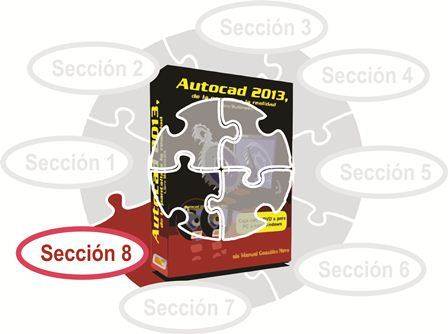3D Drawing with AutoCAD - Section 8

40.1.2 Modification and creation of materials
Once you have defined the materials to be used in a model, you may want to make changes to one of its many parameters, perhaps to give greater refraction to a surface or to modify its relief.
To modify the values that define a material we can double-click on any of them (remember: among those assigned to the drawing or that are in a personal library, never those in the Autodesk library), which opens the material editor.
The list of properties that appear in the editor depends on the selected material. In some cases, such as brick walls, we can only modify its level of relief and, in any case, its texture. In others, metals like their refraction or self-lighting. The crystals have properties of transparency and refraction, and so on.
It is also possible to create new materials, either from templates where we define the basic component of the material (ceramic, wood, metal, concrete, etc.), or create a duplicate of any other material and from there make modifications. This material becomes part of the current drawing and from there we can integrate it into custom libraries.
Autocad has a generic material, without features, called Global, which serves as the basis for creating a material from scratch. When we select it, we must then define the following properties of a material:
- Color
This is as simple as selecting the color of the material, however, we must consider that it is affected by the light sources available in a model. The farthest parts of a light source have a darker color, while the more distant parts are usually lighter and even certain areas can reach the target.
Alternatively to color, we can instead select a texture, made up of a bitmap.
- Blurred
If we use an image as a texture map, we can define a blur for the material. That is, the color that reflects an object when it receives a light source.
- Brightness
It depends on the amount of light reflected by a material.
- Reflectivity
Light reflecting a material has two components, the direct and the oblique. That is, a material does not always reflect the light it receives parallel to it, because that depends on other factors of the same. With this property we can modify both parameters.
- Transparency
The objects can be completely transparent or completely opaque. This is determined with values ranging from 0 to 1, where zero is opaque. When an object is partly transparent, such as glass, it can be seen through it, but it also has some refractive index. That is to say, a certain level of curvature that acquires the light when crossing it, therefore, the objects that are behind can be clear or partially distorted. Here are some refractive index values of some materials. Note that at higher rates, the distortion is greater.
Material Refractive index
Air 1.00
Water 1.33
Alcohol 1.36
1.46 Quartz
Crystal 1.52
Rombo 2.30
Range of values 0.00 to 5.00
In turn, the translucency determines the amount of light that is dispersed inside the material itself. Its values range from 0.0 (not translucent) to 1.0 (total translucency).
- Cuts
Grayscale simulates the appearance of the material if pierced. The lighter areas are modeled opaque, while the darker areas are transparent.
- Self-lighting
This property allows us to simulate a certain light without creating a light source like the ones we will see in the next section. However, the light of the object will not be projected at all on other objects.
- Relieve
When activating the relief, we simulate the irregularities of a material. This is only possible when the material has a relief map, where some higher parts are lighter and the lower parts appear darker.
Let's take a look at the Autodesk materials editor.
From the material editor we can also edit the textures. Since textures are based on bitmaps, some of their parameters are not very relevant to the final result, but there is one that is essential when applying a textured material in a model: its scale of representation. If you apply a brick material to a polysolid, for example, you will not want of course that each brick looks excessively large or small with respect to the size of the wall.
<

